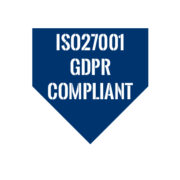On good days, the job of a manager is simple: keep the company running, the employees productive and the customers happy. What distinguishes a true leader from a manager is how he or she reacts in times of change. This applies for the company structure as a whole, as well. A successful company stands out for its focus and its motivation to adapt quickly and to reinvent itself.
FOCUS 1
First the person, then the employee
A crisis like the one we are currently experiencing forces us to change and that is being felt in the workplace too. In an economy that is all about connectivity, innovation and human qualities, every employee becomes important. The keyword here? Empathy. The corona crisis has taught us that we do not always have control over situations. Some people scrupulously follow all the hygiene rules and still get sick. We are evolving towards a new, more empathetic management style. Working is becoming a form of mutual exchange, a matter of give and take. Because, in return for the understanding that you show by supporting an employee, even when times are hard, you get commitment and loyalty. A significant added value for companies that nowadays have to contend with a high turnover of personnel. The modern company keeps the balance between work and private life, is flexible and is open to new ideas.
FOCUS 2
A horizontal structure
A traditional company has a hierarchical structure with vertical power dynamics. Employees work according to their job description and within a clearly defined hierarchy. The modern company opts for a more flexible and freer operational model. Companies collaborate more with each other and engage in networking in order to diversify their activities and take on new challenges. Employee job descriptions are also less strictly defined. Many jobs are becoming more fun and more interesting, but also more challenging. Employees are now expected to have more knowledge, and to be fast, smart and innovative, as opposed to simply hard workers. They have to be able to adapt quickly and are highly dependent on social skills, such as listening, understanding, negotiating and the list goes on.
FOCUS 3
Evolving towards a more close-knit and trustworthy working environment
Transparency in the workplace, it’s something we’ve been hearing quite a bit about in recent years. The modern company goes a step further and wholeheartedly embraces honesty in the way it operates, in order to thus become part of a more close-knit and trustworthy world. Does this all sound a little bit touchy-feely? Nevertheless, it has been found that companies that espouse this vision project a sense of reliability and have happier employees. And happiness in the workplace generates engagement, which is extremely important in an age when a high staff turnover is a reality. Moreover, honesty also ensures that, as a company, you can attract people who are a perfect fit with your corporate culture, which in turn enhances productivity. When you encourage candour and information-sharing at every level of your company, you pave the way for a more consistent internalisation of the business goals
FOCUS 4
You’re nowhere without technology
The Internet and especially smartphones have changed the way users interact with technology nowadays. This digital lifestyle and the countless digital transformations that companies are experiencing represents the decline or even downfall of traditional companies. Companies are being forced to reconsider their business models and this is true in virtually all sectors. Take the media, for example. The advent of Netflix has rapidly and relentlessly forced traditional media outlets to rethink the way they approach their customers. Learning to think in a ‘mobile’ way, trading a traditional pattern of operation for a new, more flexible and innovative style of working is now a must, if you don’t want to miss the boat. Investing in technology is the only way to keep a foothold, and this is also true for smaller companies. The current corona crisis is forcing many companies to start working with video software such as Zoom, Whereby, GoToMeeting and Skype, and project management tools such as Slack and Asana. When you invest in the right technologies, recurring tasks can be completed faster and with better results. And that’s not all. The use of new technologies also brings more flexibility and often greater security.
FOCUS 5
Make your employees versatile
Individual and routine work is being transformed into project-based work. Employees are increasingly working together in diverse groups and teams. The new way of working takes advantage of diversity in order to rapidly solve complex problems and overcome challenges. This requires a creative way of thinking and working. Training is essential for facing up to these challenges. Depending on the desired result, you may want to opt for face-to-face training individually or in groups, digital training or a combination of the two, which is known as blended learning. What if your employees don’t feel like learning? Then digital training offers many possibilities for counteracting the resistance to learning and for offering your colleagues a pleasant and challenging learning experience.
Soft skills training
Skills such as listening, working with others, presenting ideas and communication are becoming increasingly important. Strong soft skills ensure a productive and healthy working environment. e-Learning is the perfect way to prepare for a classroom exercise. In a digital training session, the e-learner can immediately apply the theory to concrete examples in a safe environment. It’s no problem to make mistakes, you’ll only learn more that way. And in the digital world, you are not going to do any real harm. After following the e-Learning programme, the e-learner is ready for the next step: a live practice session.
Safety training
This type of training is designed to reduce organisational risks and to comply with local or national policies and government regulations. An efficient way of informing and testing your own employees as well as third parties (such as contractors, suppliers, customers and patients). The topics are determined according to the needs of the company or organisation, the standards in the sector and the required legal frameworks. What is the advantage of e-Learning? Everyone receives the same information in a uniform way. What’s more, you can conclude with a test that automatically picks a number of questions from a pool of questions. The results are recorded in an LMS, so that you can immediately see who has completed the module and who has passed the test.
Product training
Product knowledge and sales skills are critical for a company’s success. There are many types of e-Learning modules that fall under the heading of product training. The internal product training that is used to teach employees about a new product or system. Infomercials, which are used to inform third parties (such as customers, resellers or dealers) about a new product or service. Performance support, an online help function where the employee can find information at any time about products, systems, (sales) techniques… This information is available anywhere, whenever you need it.
Refresher training
Short and sweet e-Learning modules designed to refresh knowledge and skills that have already been acquired. Refresher training (or Retraining) is used to familiarise employees with new skills, methods and practices through repetition, in order to improve their performance. This form of online training is not yet being used proactively enough, but it is often a form of remediation. Are tasks not being completed on time? Are you experiencing frequent accidents or high-risk behaviour? Or are you encountering resistance to acceptance of new methods/concepts? Then retraining can be used as an enjoyable way to ensure that the company rules are respected.
Onboarding
Induction or onboarding e-Learning is corporate training for new employees. The goal? To pick up the necessary knowledge and skills that will get results quickly. These are versatile online training courses about practical arrangements, corporate culture, job descriptions, goals… In other words, everything that new colleagues need to know to find their way. Good onboarding results in greater engagement because the new employee is fully immersed in your company’s DNA and is given a proper welcome. An engaged employee not only performs better, but is also loyal. Induction is therefore an efficient way to prevent staff turnover. Induction e-Learning relieves a large part of the stress on the job, which benefits both the new employee and the company.
Online assessment
These are online modules that are used as tests and assessments. Online assessments can be used in different ways. For example, to evaluate your strengths, weaknesses, skills and knowledge BEFORE starting a training programme. Formative assessments evaluate the employee’s performance and progress DURING an online training programme. This type of test is part of the learning process. Summative assessments test the knowledge at the END of the learning process. They are used to evaluate whether the learning objectives have been met. Norm-referenced assessments compare individual performance with a national or other norm group. In short, online assessments give you insight into the strengths and weaknesses of your team members.
Infomercials
An infomercial is a short online video that provides information on the unique qualities of a given product, activity or service. Each specific target group has its own proven marketing language. Providing information on the functioning of a high-tech product calls for a different approach than stimulating impulse purchases. How is relevant information selected? Which words have a greater impact and which ones should you absolutely avoid? Would you be better off choosing graphic design or video? Marketing studies are performed before each infomercial is created.
Digital manuals
The digital manual is very much part of the age in which we live. Your customer or employee receives clear information about your product. Animated images support their journey of discovery. Our manuals can be translated into over 30 languages and are easy to update. That way, your manual doesn’t have to be reprinted and your user always has the most recent information. Sometimes the information that is consulted is recorded through analysis tools. This generates valuable input for product optimisation.






